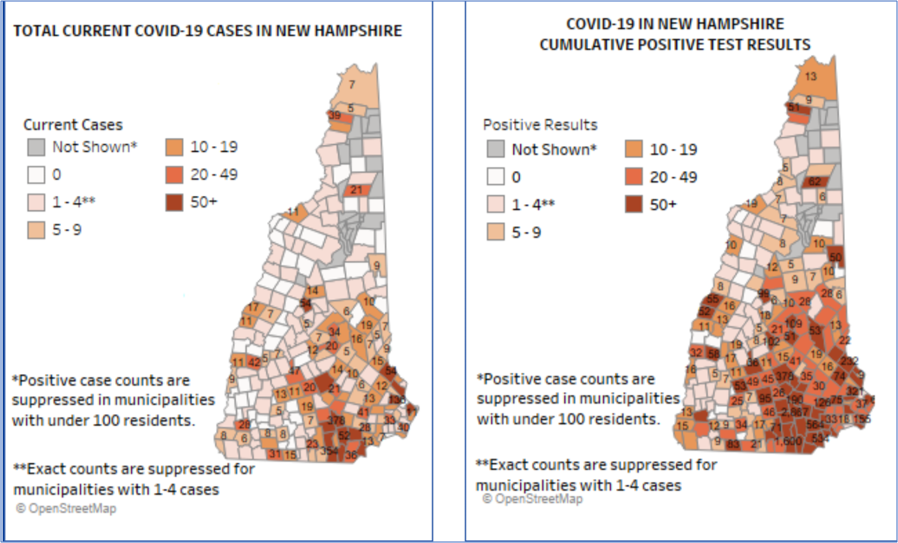After months of keeping the coronavirus (COVID-19) numbers at bay, New Hampshire has seen another spike in positive cases which has prompted them to enhance travel restrictions.
The Granite State is experiencing its highest number of positive daily cases according to the New Hampshire Department of Health and Human Services (NHDHHS). Currently, there are 4,720 infected individuals in the state, with 159 of them being hospitalized.
Since Oct. 21, NHDHHS has reported that the daily average cases have risen from 51 to a substantial 575.6 cases on Dec. 3. This includes 783 positive cases on Dec. 2, N.H.’s largest total in one day at any point during the pandemic.
In response to the recent rise in cases, the New Hampshire Division of Public Health Services in tandem with the Bureau of Infectious Disease Control sent out a press release covering the reform of the state’s COVID-19 travel guidance. It states that “Travelers/visitors to AND residents of NH need to self-quarantine for 10 days following the last date of any high-risk travel, which includes travel internationally (including to/from Canada); on a cruise ship; or domestically outside of the New England states of Maine, Vermont, Massachusetts, Connecticut, or Rhode Island for nonessential purposes.”
This requirement has been consistent over the last several months in terms of the states that have restrictions attached to them, but the press release included some refinement. The NHDHHS elaborated by saying that the people who participated in high-risk travel can end their quarantine early (after seven days) if either they or a medical professional administer a molecular COVID-19 test on day six or seven and the results are negative. Antigen tests are prohibited from this clause. Also, with recommendations from the Center of Disease of Control (CDC), the length of a quarantine has been cut to 10 days from 14.
The testing out of quarantine option is only available for people that had to isolate because of travel restrictions. It doesn’t apply to anyone who had to quarantine due to a high-risk close contact or from a positive test.
In a Dec. 3 press conference, N.H. Gov. Chris Sununu explained that the CDC allowed states to have the test-out option with all quarantined individuals, but that his state couldn’t do it because it would overwhelm testing facilities. He also said that due to an increase of testing around the Thanksgiving holiday, there is a four-to-five day wait for results, so adding to that would create even more of a backlog.
While new stipulations were added to the travel limitations, the NHDHHS still requires priorly isolated individuals to self-evaluate themselves. “They must still self-observe for symptoms of COVID-19 and strictly adhere to COVID-19 mitigation measures (social distancing, avoiding social gatherings, wearing a face mask, practicing frequent hand hygiene, etc.) for a full 14 days after their last day of travel.”
Other states have taken notice of N.H.’s rise in cases, as Massachusetts implemented a high-risk classification to their travel restriction to their neighboring state on Nov. 21. Vermont and Hawaii remain the only low-risk states on their list.
Photo Courtesy of www.nh.gov, Data from December 8th, 2020























John W Putnam • Jan 4, 2021 at 6:35 pm
How do you enforce these mandates and how can you report breaches by indaviduals